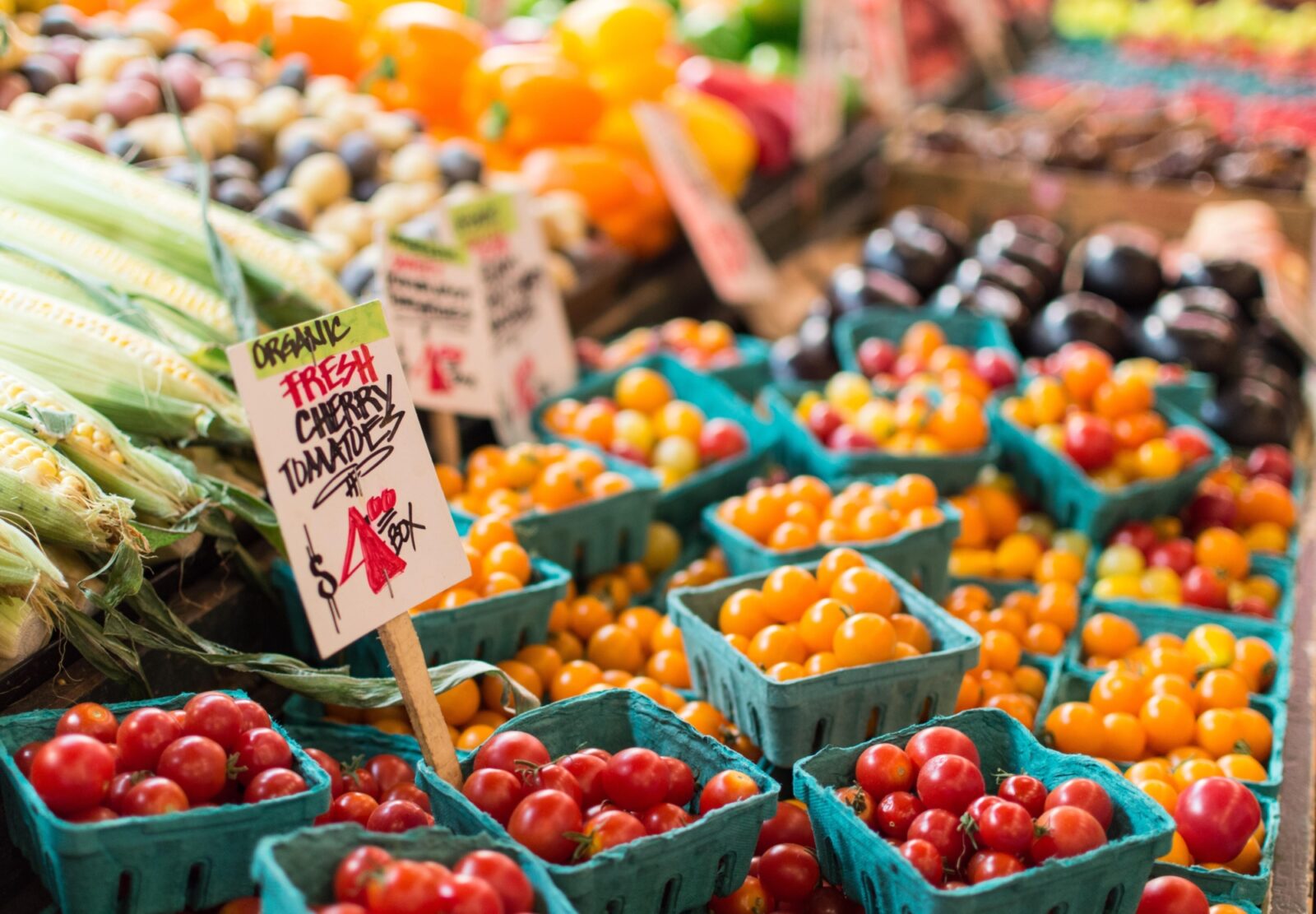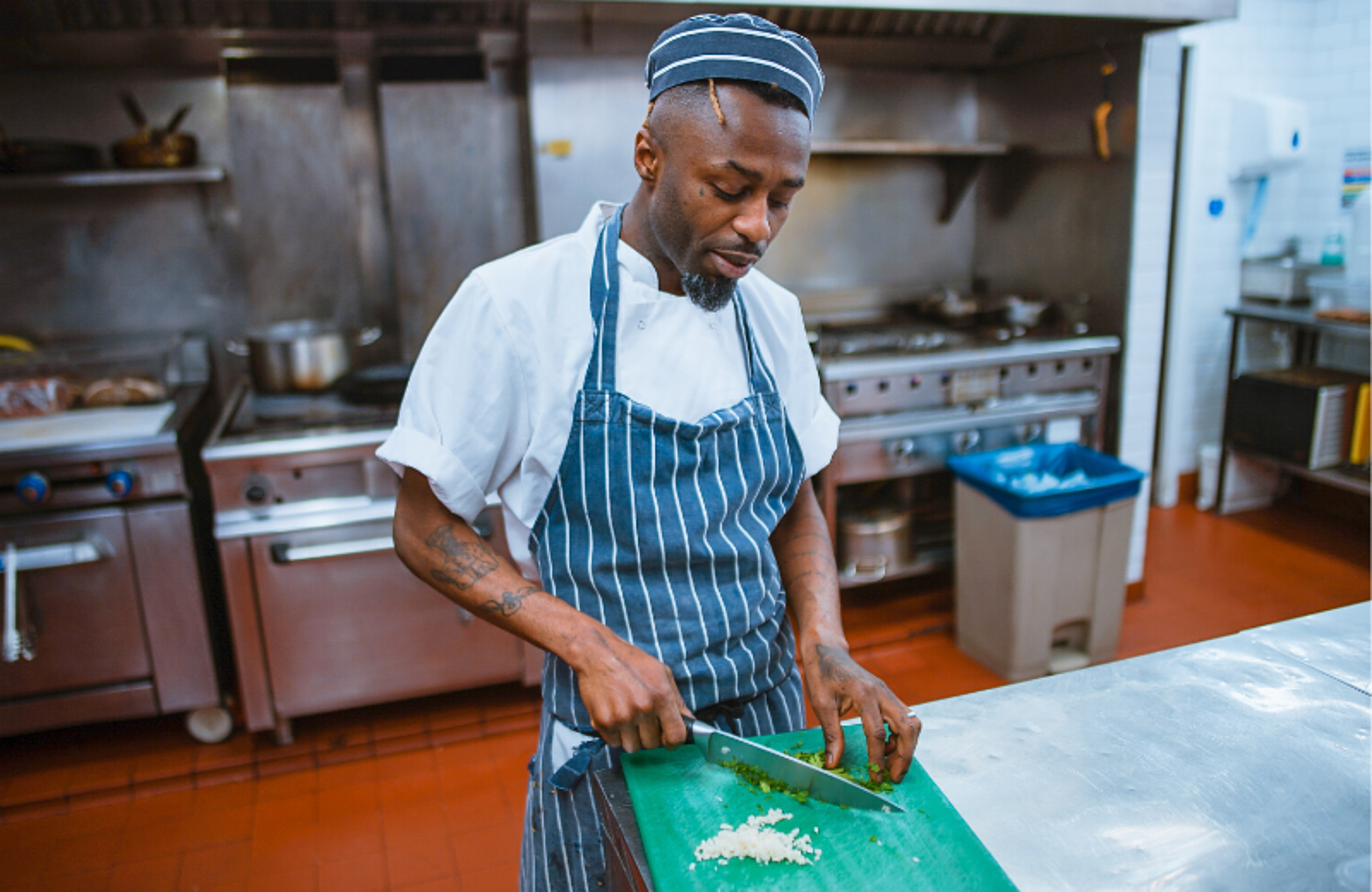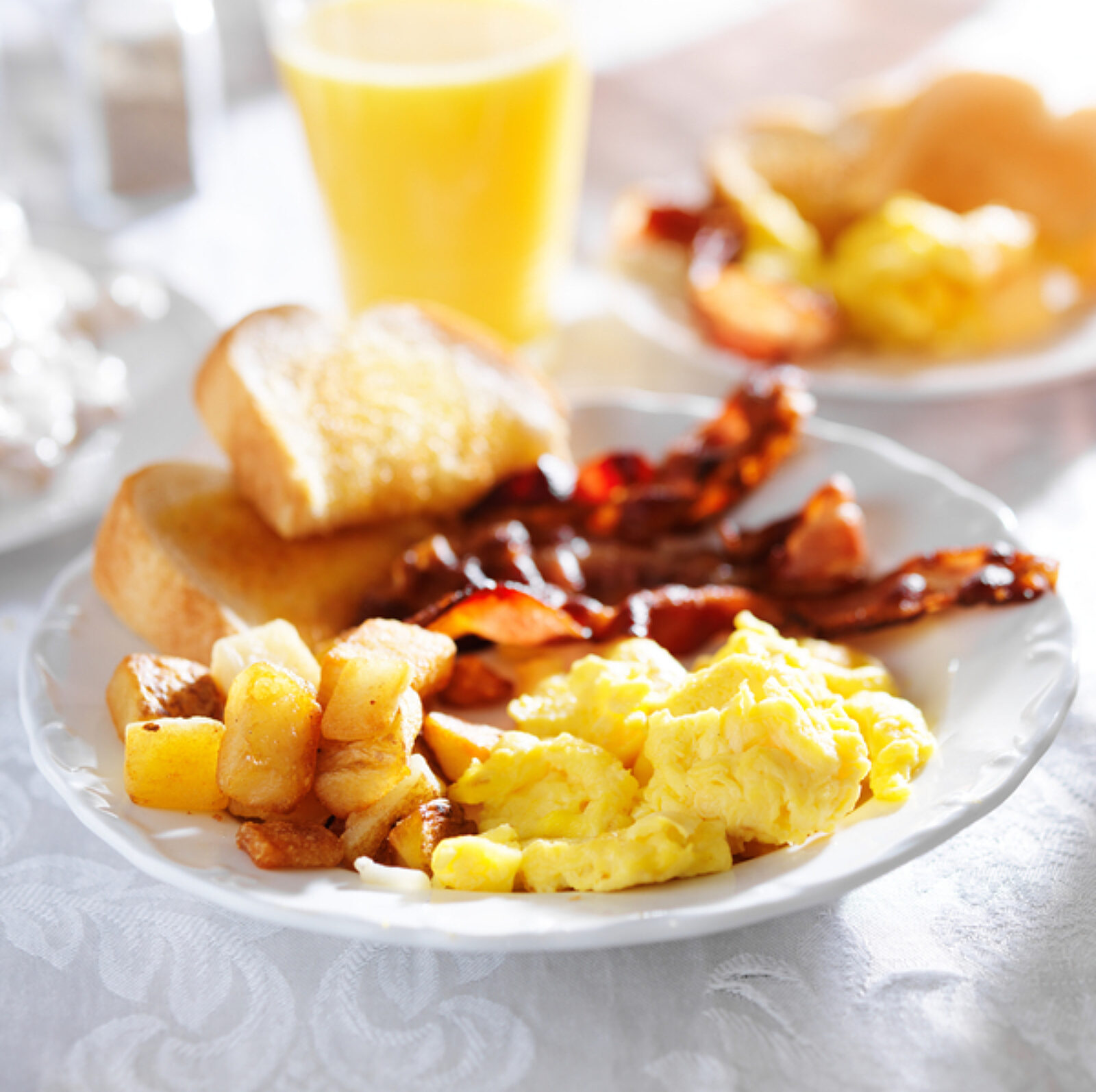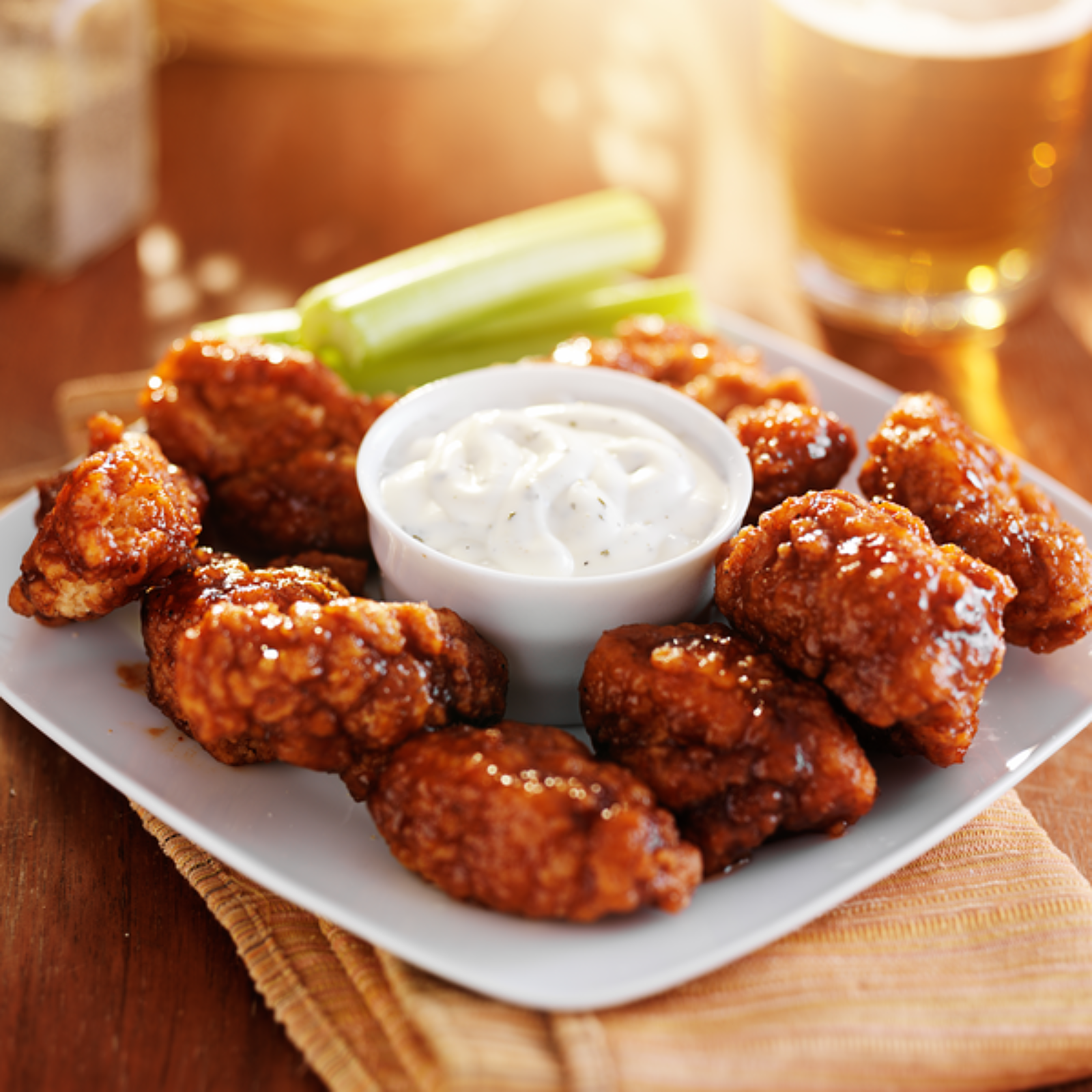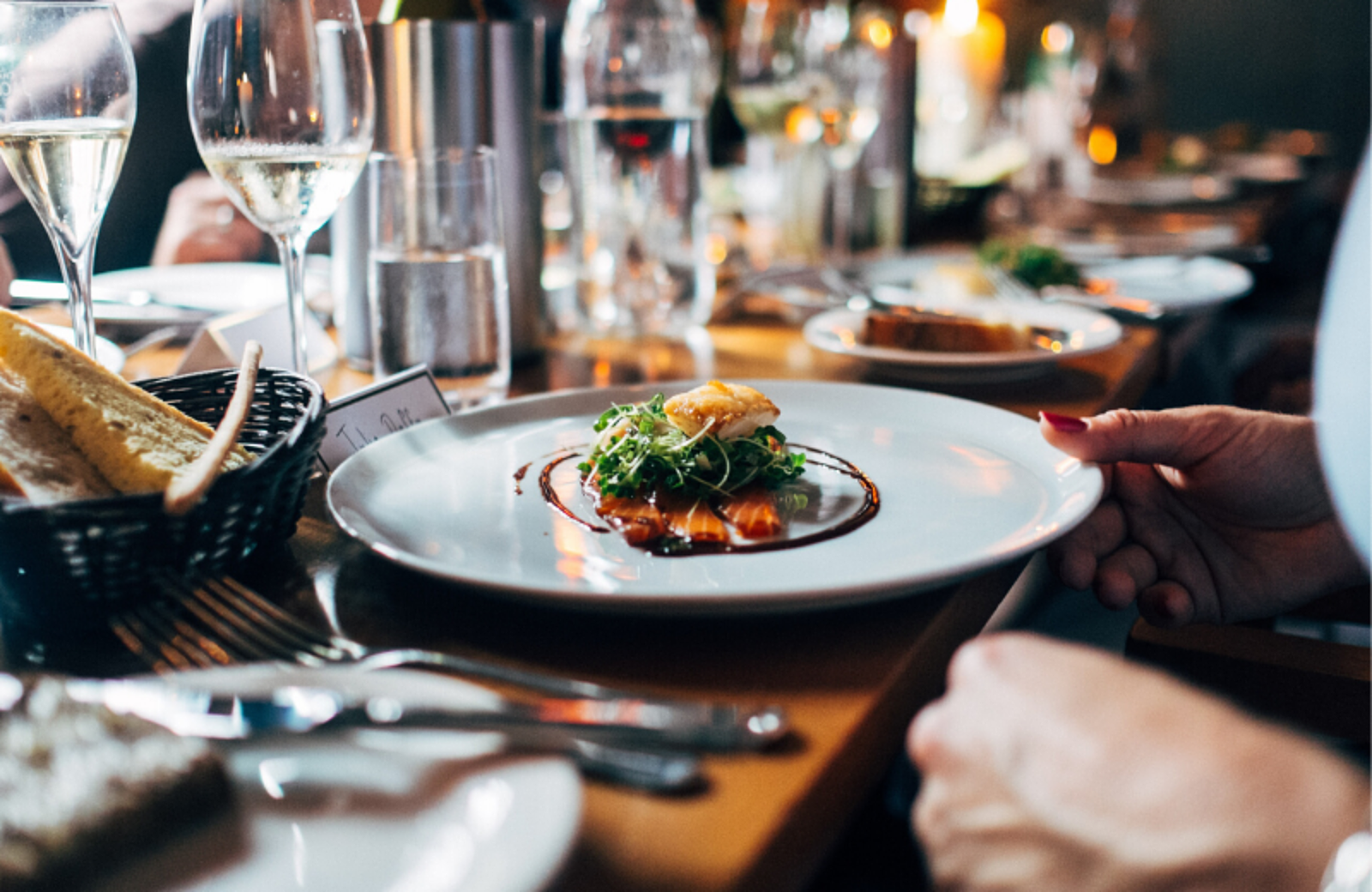How To Use Restaurant Food Cost Control To Protect Profitability

Justin GuinnAuthor
Restaurant food cost control can be a critical factor for the long-term success of an operation.
Food costs are a significant factor of restaurant success. That’s why restaurateurs and kitchen managers need to understand restaurant food cost formulas, consistently monitor food prices and inventory tracking, and conduct ongoing strategic menu pricing tweaks.
Restaurant cost control can be challenging, but it doesn’t have to be. Calculating food costs must be done regularly to ensure costs accurately reflect changing market rates.
Tracking changes to the cost of ingredients can be a painstaking, time-consuming process to do manually — which is why it can be beneficial to inject technology and automations into the process.
In this article, you learn tactics for optimizing food cost control, understand common restaurant industry benchmarks for food costs, and see how point-of-sale, invoice automation, inventory management systems, and other tools can help automate overall food cost control and boost your restaurant’s profitability.
Restaurant Operator Insights Report
See insights from real restaurant operators which can help you benchmark your current and planned restaurant technology stack against your peers as we head into 2024 and beyond.

What makes up your restaurant food cost?
At a very basic level, restaurant food cost is the total combined cost of a restaurant’s food. However, finding that cost is a little more complicated than that.
When restaurants talk about food cost, they’re usually talking about two types.
Period costs are the total food cost over a specific period, like a week, month, or year. In order to calculate period cost, you’ll need to use the cost of goods sold (COGS) ratio. Restaurant owners can use period costs to provide a quick snapshot overall food costs health.
Plate costs are the total costs required to produce individual menu items. Calculating plate cost starts with recipe costing, which is the process of standardizing your recipes and determining their cost per portion. Then to calculate plate cost you add the portion costs for each recipe on the dish — as well as any standalone ingredients such as proteins — to get the plate cost.
Calculating one or both of these costs is essential for monitoring a restaurant’s bottom line and the impact food costs has on it. They can highlight any food costs increases, alerting operators to set better prices for their menu or look for better prices from suppliers.
An in ideal state, these cost measures would be as close to real-time as possible — something that may only be achievable with restaurant inventory management and other cost control tools.
How to Cost a Plate of Food Based on Your Restaurant Recipes
Learn how to calculate plate costs so you can properly price menu items, manage your COGS, and achieve profitability targets.
Get AccessWhat is your restaurant food cost percentage?
Most restaurateurs will express food costs as a percentage of total food sales rather than an overall number. This is known as a restaurant’s food cost percentage.
It’s calculated by either taking the total costs for a specific period and dividing it by the total sales for the same period (e.g., the period cost) or the cost price of a menu item and dividing it by the sales price (e.g., the plate cost) — and then multiplying the ratio by 100.
While it’s not necessarily required, having a strong POS system with sales data reports can help make these calculations much easier.
What’s the difference between food cost and prime cost?
Food cost is not the same as prime cost. However, food costs are used to calculate prime costs, so it’s important for them to be as accurate as possible.
Prime costs are a common restaurant accounting metric that successful restaurants regularly track.
Restaurant prime costs are the combined sum of COGS and labor costs over a given period.
Products include ingredients, alcohol and non-alcoholic beverages, and paper goods and packaging for take out and delivery sales. Labor costs include salaries, hourly wages, taxes, and any employee benefits you may offer.
Restaurant owners must know food costs
Food costs are one of the largest expenses for restaurants. For your restaurant to be successful, knowing and controlling food costs is table stakes.
Food cost is a key factor when strategically pricing your menu. Though perceived value and market demand are also considerations, the actual food costs are really what determine where a price should be set to make margin on any given menu item. Plate costs and the restaurant’s food cost percentage goal must be used to determine menu pricing.
Restaurant food costs also determine overall prime costs. Food and labor costs are controllable, “prime” expenses, which means that you or restaurant management have direct control over their influence on profits and losses. As such, restaurants must track their food costs to be able to determine what should be more tightly controlled for profitability.
Finally, knowing food costs can help you achieve cost targets. Tracking how plate or period costs change over time gives you insight into how food cost is trending and gives you valuable information about the need to increase prices or implement various food cost controls.
Implement restaurant food cost controls
Now that you know how to calculate your restaurant food costs and identify how to determine if your food cost percentage is on track for your profit goals, you can put controls in place that help you get — or maintain — that percentage where you want it to be.
There are many ways that you can control food costs at your restaurants. Use these strategies to help you contain or reduce food costs to maximize margin!
Forecast sales all year round
Sales forecasting is a critical planning task in every restaurant business.
In essence, all it involves is looking at your past sales and using that data to predict your sales in the upcoming weeks. Not only does this help managers control food waste, it also results in better management of employee scheduling, ordering, and food prep. However, getting the forecast right requires more than a quick glance at your four-to-six-week sales average.
Recent sales trends may lead you to think you need a certain amount of food and staffing for the coming days or weeks, but that could change greatly if you’re approaching Memorial Day weekend, for example. And the consequence of missing your forecast can be costly — anyone who’s worked in restaurants has experienced the chaos of an understaffed long weekend shift.
Consider seasonal changes, holiday and community calendars, competitor activity, and weather when forecasting your sales.
Set goals and track progress
One way to manage food cost is through the establishment of thresholds and ideal food cost variances for your restaurant.
By monitoring the variances in ideal food cost versus actual food cost, you can pinpoint operational weaknesses, identify loss and theft, and combat rising commodity costs. Finally, do not underestimate the cost of food waste; controlling waste is a key component in controlling your cost of goods sold.
Aim for your ideal food cost and keep track of what is and isn’t working to push your restaurant’s food cost closer to your goal.
Train your staff to keep food costs in mind
When new team members enter your restaurant business, how do they contribute to keeping food costs low? If you run a quick-service restaurant, are your cashiers properly trained and equipped to answer guest questions and navigate the POS to prevent waste and mistakes? You’d be surprised how much waste comes from orders that were either punched or prepared wrong.
Train your cooks and line personnel on portion control, and make sure that following recipes is top of mind.
How do you measure sauce, cheese, or bacon? Are employees required to use a ladle, a scale, or some other specific measuring unit? It’s one thing to require a process for putting together menu items, but it’s another to uphold that process.
With restaurant labor management software, operators today can match their employees with restaurant performance and see firsthand who might be over-portioning. These insights can help managers or chefs focus on coaching staff members who need it most.
Restaurant Cost Control Guide
Use this guide to learn more about your restaurant costs, how to track them, and steps you can take to help maximize your profitability.

Provide clear standards for employee meals
Most restaurants have a policy when it comes to free or discounted employee meals. Some provide a basic staff meal for free to all employees while others have staff choose their meals and pay for them at a discounted rate.
While it may seem tempting to cut employee meals as a quick way to lower your food cost, you will see an inevitable dip in employee morale. Your staff works long hours in a fast-paced environment, so sitting down for a free or discounted meal every day is a crucial part of team building.
That being said, make sure you set thresholds for free meals and discounts and communicate those expectations to your staff. Make it clear that staff meals are meant to be delicious, filling, and balanced, not extravagant — filet mignon won’t be making an appearance except on special occasions.
Monitor supplier price changes
Your vendors frequently change their prices based on the seasonality of items as well as the demand. These fluctuations can seem very minimal from week to week, but can add up to a lot of money over time.
Tracking price changes will also help you determine if your plate costs need to be recalibrated — which, as you know, can make all the difference in if you hit your target food cost percentage.
Invoice processing automation can make it easy to make a habit of tracking price variances. By digitizing invoice data, you’re collecting important information that can help you see if vendors are consistent or change prices frequently, and gives you more negotiating power for net pricing.
Cultivate additional relationships
In tracking your existing vendor’s invoices, you may discover that prices fluctuate so wildly that they’re impossible to predict, or that your vendor is frequently changing prices seemingly with no rhyme or reason.
Because of this possibility, you should have several vendors on hand. Expand your sources, and compare their bid sheets against each other — and your pre-existing vendors. You not only open yourself up to having more choices, but you also open the door to negotiate food costs down even further by pitting vendors against each other for your business.
Re-engineer your menu
Take a long look at your menu and learn to use the basics of menu engineering to eliminate the menu items that are costly to prepare and unpopular. These are the items that are sending your food cost way up without bringing in any extra profit.
There does have to be a balance here. Restaurants must have some popular items that create great customer experiences and keep guests coming back. But there also need to be some high-profit margin items on the menu to stretch the bottom line and make up for any popular, low-margin items.
Lockdown your restaurant inventory management processes
Taking inventory is never exciting; it’s yet another time-consuming process that takes you away from creating delicious plates and a hospitable environment. However, restaurant inventory management can make or break food costs.
How many times have you ordered from vendors and wound up throwing half of the perishables away by the end of the week because you ordered more than what you could store or sell? And what about the occasions when inventory was incorrect or off, and you were forced to buy smaller quantities at a higher price — or even send a staff member to a local grocery to pick up an emergency supply?
Poor inventory management can lead to food waste and higher food costs, so it’s vital to do it with an iron fist. By doubling down on inventory control, you’re taking better control of food costs. This is especially true once you realize managing your restaurant inventory in Excel is no longer a viable option.
Use these quick tips to master your restaurant’s inventory:
Check all incoming orders against their invoices to ensure the correct weight, quantity, and quantity arrived. Note where there are discrepancies so you can get credited by your vendor.
Take inventory as frequently as possible in order to know what’s on hand so you don’t over- or under-order and better understand your COGS.
Instruct chefs and prep cooks to use the First In, First Out (FIFO) method, meaning that the oldest ingredients in the kitchen should always be used first. This will help eliminate food waste.
In a rough financial spot? Squeeze everything you can out of existing inventory and vendor agreements to run an even tighter ship.
Waste not, want not
According to the USDA, about 30-40% of the United States’ food supply becomes food waste. In 2010, this was an estimated $161 billion in losses. The numbers are staggering. It’s a significant amount of food — and therefore money — that literally gets thrown away each year.
Reducing food waste and spoilage in your restaurant also reduces food cost. Some restaurants have been able to implement zero waste policies, but it’s rare. More realistically, you can implement a Waste Not, Want Not policy for the kitchen.
Produce and protein scraps should be collected and frozen to make flavorful stocks and soups. Bread that hasn’t been served at the end of a shift can be repurposed for tomorrow’s croutons. Stray berries and fruits can be made into jams and jellies.
Try generating some buy-in by encouraging the kitchen to repurpose food waste. You could even gamify it by creating a rewards system. It’s a win-win: you’re offering them an opportunity to get creative with the craft they love, while reducing your food costs.
Write it in the rulebook
Don’t let your efforts in reducing food cost get derailed by the rest of your staff! Make reducing food cost a restaurant policy, and ensure your staff understands exactly what that means and what they can do to help.
We already know what this looks like in the kitchen. For front of house or service staff, it could mean things like only offering each table one piece of bread per person and carefully watching beverage refills.
You may even decide to incentivize employees who have helped you reach target food costs. If you’re ready to go down this route, download our eBook, How to Structure Bonuses at Restaurants! We provide templates for bonus structures for your ease — including one based on cost control.
Watch portion sizes
There’s something comforting about seeing a huge plate of piping hot food coming out of a kitchen. But how do you feel when you see half of that food make its way back to the kitchen to be thrown out at the end of a meal?
Be mindful of the portion sizes at your restaurant to control food cost and waste. If a significant number of plates are being cleared with food still on them, it could be a sign that you’re serving too much (or that the food isn’t up to snuff, which we won’t dive into today).
You may also ask trusted regulars or send surveys to confirmed diners to gather opinions on serving sizes. You may be tempted to continue offering larger portions so customers can take leftovers home, but remember — those to-go containers cost money, too!
Eliminate bottlenecks with automation
You can implement all of the above suggestions to control food costs at your restaurant, but it doesn’t eliminate the time it takes to continuously update plate costs or compare vendor prices.
Enter automation; Restaurant technology is available that automatically uploads and codes incoming invoices from vendors, so ingredient prices and how they change over time get tracked without manual intervention. Automating the various ways in which food costs are tracked gives you more accurate data — with much fewer complicated calculations.
The software solutions can be so sophisticated that they also automatically calculate plate costs at any given time based on the data gathered from vendor invoices.
Menu Engineering Worksheet
Use this menu engineering worksheet, complete with intricate menu engineering formulas, to determine areas of strength and weakness in your restaurant's menu.

Invest in restaurant management software and food cost control tools
Your most important takeaway from all of this should be that restaurant management software and cost control tools can help simplify the process so you can control your costs and profitability without spending all your time in spreadsheets.
Your point of sale (POS) system is the foundation of your restaurant technology stack. Its purpose can extend far beyond inputting orders and processing transactions.
Toast is a POS system built for restaurants. It can help unlock tons of food cost control and forecasting insights — especially when combined with xtraCHEF by Toast.
xtraCHEF by Toast can help ease your cost control processes. Its restaurant-specific invoice processing automation digitizes your critical invoice line-item details, including ingredient information, pricing, unit of measure, supplier, and date.
Over time, line-item details provide pricing trends to show you exactly which ingredients are eating into your profit margin — with additional tools highlighting how ingredient price fluctuations are impacting individual recipes and finished dishes.
These insights and automation can help empower restaurant operators to truly take control of costs, achieve profitability targets, and work toward growth goals.
Is this article helpful?
DISCLAIMER: This information is provided for general informational purposes only, and publication does not constitute an endorsement. Toast does not warrant the accuracy or completeness of any information, text, graphics, links, or other items contained within this content. Toast does not guarantee you will achieve any specific results if you follow any advice herein. It may be advisable for you to consult with a professional such as a lawyer, accountant, or business advisor for advice specific to your situation.

